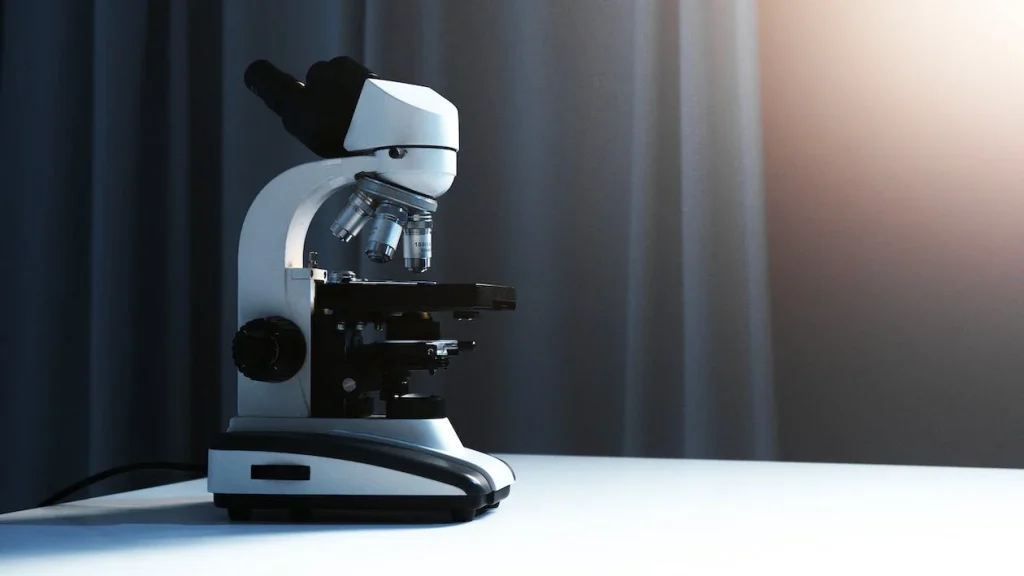Antimicrobial resistance, of AMR, is one of the greatest public health crises of our time. Selux Diagnostics, founded in 2014 by two engineers working in an attic laboratory, has assembled a multi-disciplinary team of top microbiologists, engineers, software developers, and data scientists to tackle the crisis head on. Innovation, Selux believes, is the only way to win.
MassTLC asked Selux to share more about the latest advances in AMR. Read on for insights from CTO Eric Stern, PhD, and Chair of its Clinical Advisory Board Dr. Jim Lewis, PharmD, FIDSA, Infectious Diseases Pharmacy Clinical Coordinator and Associate Professor Department of Medicine – Division of Infectious Diseases at Oregon Health and Science University (OHSU); Chair of Selux Diagnostics’ Clinical Advisory Board.
 |
 |
Could you tell us more about yourself and your work both as a physician and with Selux Diagnostics?
Eric Stern, PhD: I’m the CTO of Selux Diagnostics, a biotech startup in Boston whose mission is to combat superbug infections and antimicrobial resistance (AMR), and father of two young girls. I co-founded Selux together with my good friend and one of the smartest guys I knew in grad school, Alek Vacic, who I met in our PhD program at Yale where we worked on a DARPA-funded project to develop chemical and biological weapons sensors.
After working at two Boston-area startups, the second of which Alek and I worked at together, we had gained the confidence to start something of our own, in the diagnostics space. Our industry experience taught us the criticality of delivering a product that offers simplicity, at a low cost, and that is not only technically excellent but really scratches a key itch for customers.
After some iteration on the market and strategy for our diagnostic, we focused on two key differentiators in the technology. Some of our early experiments demonstrated that our platform could be ultra-sensitive or rapid. We began asking laboratory directors if there were lab tests for which there was a clear benefit to receiving results faster, and a chorus began to emerge: “give us a faster antibiotic susceptibility test (AST).”
Through a combination of good experimentation and hard work, we found a hand-in-glove fit for our core technology determining AST results. We assembled a team of world-class mentors and advisors, led by the “queen of AST,” Dr. Mary Jane Ferraro of Harvard University/Mass General Hospital.
Selux is a biotech company with a reputation for developing revolutionary solutions to combat infections and antimicrobial resistance (AMR). Why is innovation needed in this space?
Eric Stern, PhD: One of the most pressing threats faced by humanity is the growth of AMR. About 100 years after my grandfather’s brother died at age 5 of bacterial pneumoniae, my 5-year-old daughter got the same diagnosis at Boston Children’s Hospital. It was late 2019, and I reflected with gratitude that, unlike my great-grandparents, the biggest heartache I had as a parent in this situation was keeping her warm in the cold Boston winter as we trudged down the block to CVS to get her antibiotics. I cannot imagine the thought of such a diagnosis meaning potential, if not likely, death due to lack of an effective medicine.
AMR is driven in large part by antibiotic overuse in hospital and outpatient settings. Overuse, in turn, is driven in large part by the absence of rapid diagnostic information. In the hospital, where lives of patients with bacterial pneumonia, sepsis, and other severe infections are on the line and every minute counts, the absence of timely diagnostic results creates a vacuum that doctors must fill with powerful, “broad-spectrum” antibiotics. These medicines have a high likelihood of killing the infection but carry significant side-effects. Patients typically remain on these agents for a minimum of two-to-three days, when the antibiotic susceptibility test (AST) diagnostic results, that direct personalized therapies are finally available.
AMR creates a vicious cycle: as more superbugs emerge that are resistant to today’s broad-spectrum therapies, stronger frontline agents must be administered. But every time an antibiotic is used, bacteria get another opportunity to develop resistance to it. The more that the best, most effective antibiotics are used, the less likely they will be effective in future.
How can we address this challenge? The answer lies in faster personalized therapy administration. Yet despite rapid advances in the past decade in determining bacterial identities with the advent of PCR testing, speeding the delivery of AST results continued to remain elusive until now.
Tell us more about how the field is advancing. What are some of the most cutting-edge solutions and tools that are being developed?
Eric Stern, PhD: Selux’s platform, recently cleared by the FDA in January 2023, enables a new level of speed in AST testing not previously possible.
By simultaneously performing two different bulk fluorescent assays – one for surface area and one for volume – on bacteria, Selux’s artificial intelligence algorithms can accurately determine growth of the bacteria by accounting for morphological changes. The Selux AST system then integrates with the rapid systems that have revolutionized bacterial identification in clinical microbiology laboratories in the past decade, PCR and mass spectrometry.
Selux’s platform is unique both in its ability to accommodate all sample types – bacterial pneumoniae, wound abscess, and urinary tract infection patients as well as septic patients – as well as its ability to provide results for up to 36 drugs in parallel, about a three-fold increase in the size of the “menu” offered by other testing platforms. While multiple other rapid AST systems are in various stages of pre-FDA development today, each is relegated to a specific sample type rather than a multiple-drug panel.
The Selux AST system is further designed for parallel, random-access processing of 96 samples, meeting the needs of high-throughput, consolidated laboratories that are becoming the norm in hospital systems. This trend also represents an advance in the field, and these laboratories will rely increasingly heavily on total laboratory automation platforms, which are beginning to take hold in the US and will confer greater testing speed advantages.
For certain kinds of startups (i.e. software), innovation often means moving and failing quickly. With medicine and healthcare, that is not possible in the same way. How does Selux approach innovation as a biotech company?
Eric Stern, PhD: This is a significant challenge, as healthcare companies contend with different requirements for commercialization, such as the completion of rigorous clinical trials and regulatory review processes.
There are three guiding principles we’ve followed that have enabled us to create a revolutionary, FDA-cleared product: keep it simple; constantly ask questions of clinical partners and potential customers to understand the problem and continuously optimize your solution; and build a strong partnership with knowledgeable funders, including our Angel investors, VCs, and government funding agencies BARDA and the NIH.
By keeping the core of the platform as simple as possible, we were able to layer on complexity in functionality over time as we continued to learn about evolving clinical needs, enabling us to build a system that simultaneously meets demands of speed, throughput, and cost in AST. We believe that solving really hard technical problems requires a team that is both highly interdisciplinary and highly respectful of one another. Inclusivity and respect for different viewpoints has been tied to our raison d’etre from the beginnings of the company.
Second, it is impossible to overstate the value of carefully listening to experts in the field. Through hours of interviews we uncovered the importance of simultaneously delivering faster AST speed and expanding the menu (number of drugs that can be tested in parallel); never before had that been considered important in the space.
Third, a strong investor syndicate is also critical. Not only have our original seed investors stayed with us, but our two Series A and two Series B investors have each remained in for every round following their initial entry and have provided invaluable advice along the way. Our government sponsors, BARDA and the NIH, have similarly provided expertise in addition to funding.
As a physician, what developments in AMR and disease testing are most exciting to you?
Dr. Jim Lewis: In my now more than 20 years practicing in the infectious diseases space, it has amazed me how rapidly bacteria adapt to and overcome even the most impressive antibiotics. We have seen this repeated in every generation of antibiotics developed and we will continue to see it. So, while the emergence of novel antibacterials for some of our most challenging bacterial resistance issues over the last decade is exciting, it has been humbling to observe how quickly reports appear that bacteria have already figured out a way around these agents. This cycle and the clinical challenge that it represents, highlights the need for antibiotic susceptibility testing to be rapid, accurate, and include even the newest of agents; where though resistance is still uncommon, its presence can have very negative consequences for patient outcomes. I am excited to see that this gap—a lack of rapid, accurate, AST results against a broad range of antibiotics—is finally being filled. I am also very excited about what these new capabilities represent for improvements in antibiotic stewardship and patient outcomes.
How will these innovations impact the lives of patients?
Dr. Jim Lewis: Rapid antibiotic susceptibility results will allow us to optimize therapies for patients over a day sooner than is currently possible. This will have the most significant impact in the approximately 10-15% of cases where the patient’s infection is resistant to the empiric [initial] antibiotic therapy selected.
Patients receiving empiric therapies that are broader in antimicrobial spectrum than necessary will also see benefits. Rapid susceptibility results will allow transitions to agents optimized to best manage their infections while minimizing the emergence of highly resistant bacteria that broad spectrum agents can create. Also, providing susceptibility results to clinicians sooner ideally creates a scenario where patients can be switched to agents that best manage their infections but also allow them to be discharged from the hospital sooner. More targeted use of antibiotics results in better Antibiotic Stewardship, a CMS mandate and key goal of all providers as we try to extend the useful life of antibiotics.
New antibiotics will offer the possibility of saving lives when multi-drug resistant ‘superbug’ infections are encountered. Again, turning to the recent P. aeruginosa strain found in some artificial tears, the only clinically available drug shown to be active against that organism was cefiderocol, an agent barely 2 years old. Within the next few years, I expect 1-2 more agents with similar activity to gain FDA approval.
What’s next for Selux?
Eric Stern, PhD: We are thrilled to now enter our commercial stage and soon deliver the first of our AST solutions to customers. As early adopters gain experience with our system, we’re excited to work with these care providers to learn how our systems can be most effectively used in clinical practice to have the biggest impacts on patient care.
On the R&D side, we are working with pharmaceutical companies developing new antibiotics, as well as working with FDA to rapidly incorporate these new drugs on our AST menu through a process FDA terms “coordinated development.” We are also beginning work to integrate our AST system into total lab automation platforms.
We are humbled by the opportunity to make a difference in combatting one of the greatest public health threats of our time, antibiotic resistance, and look forward to driving forward real progress in this area through diagnostic innovation.
___




